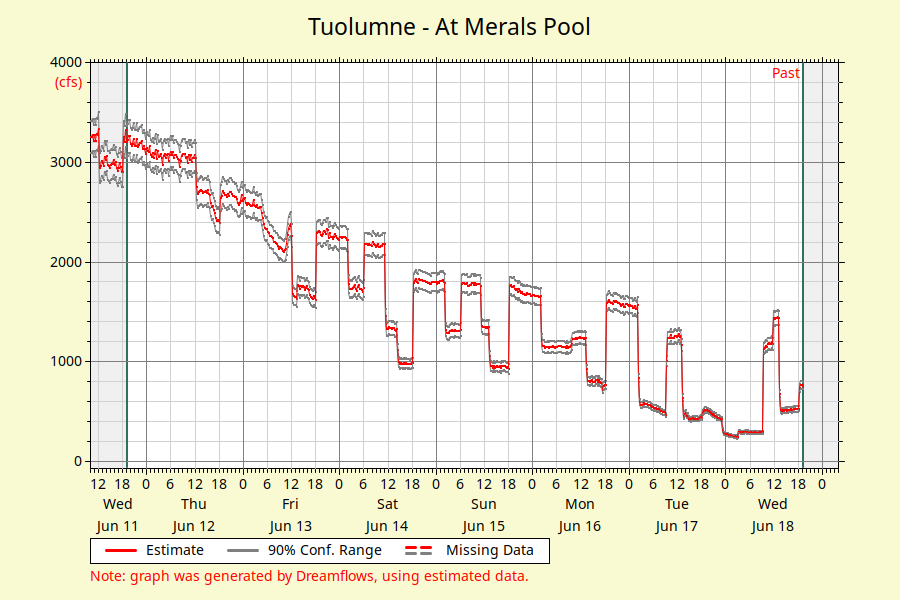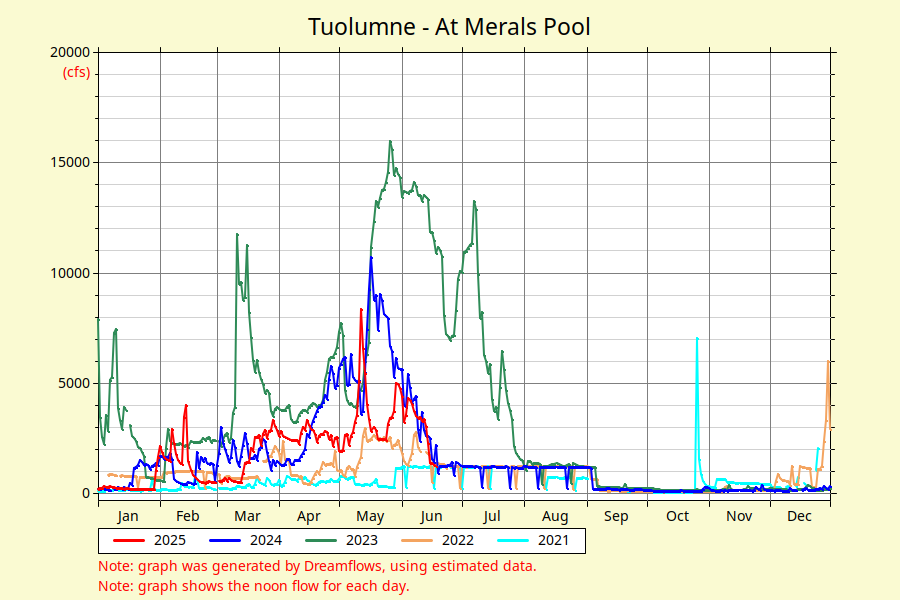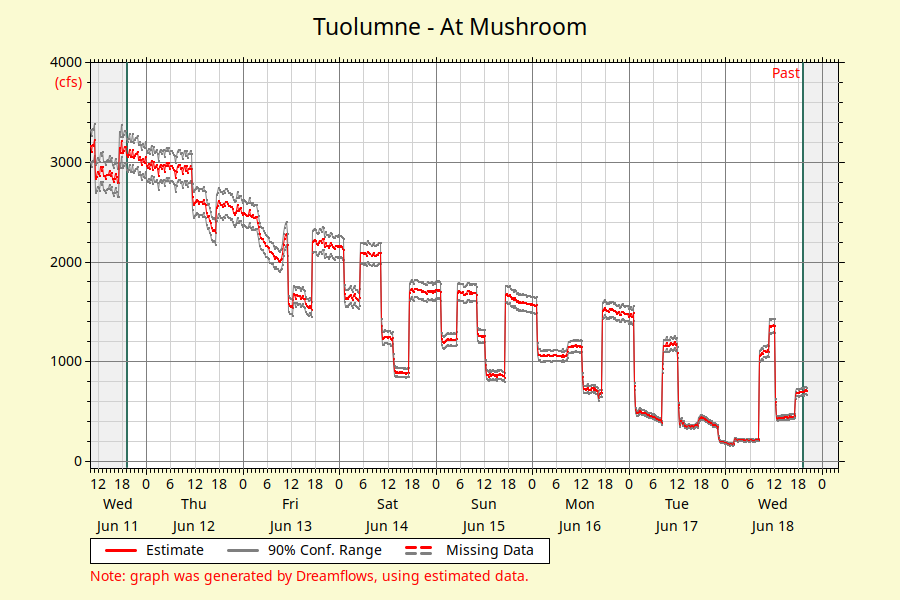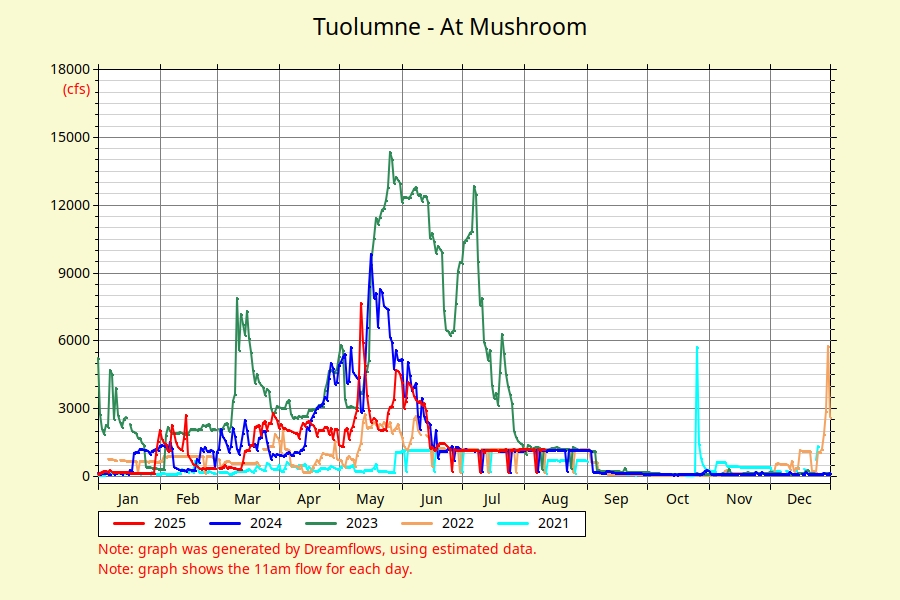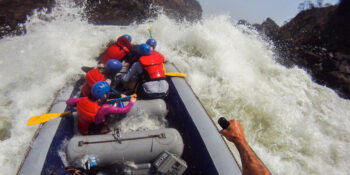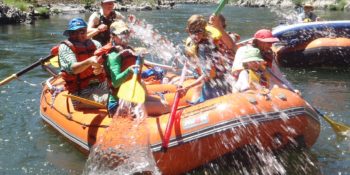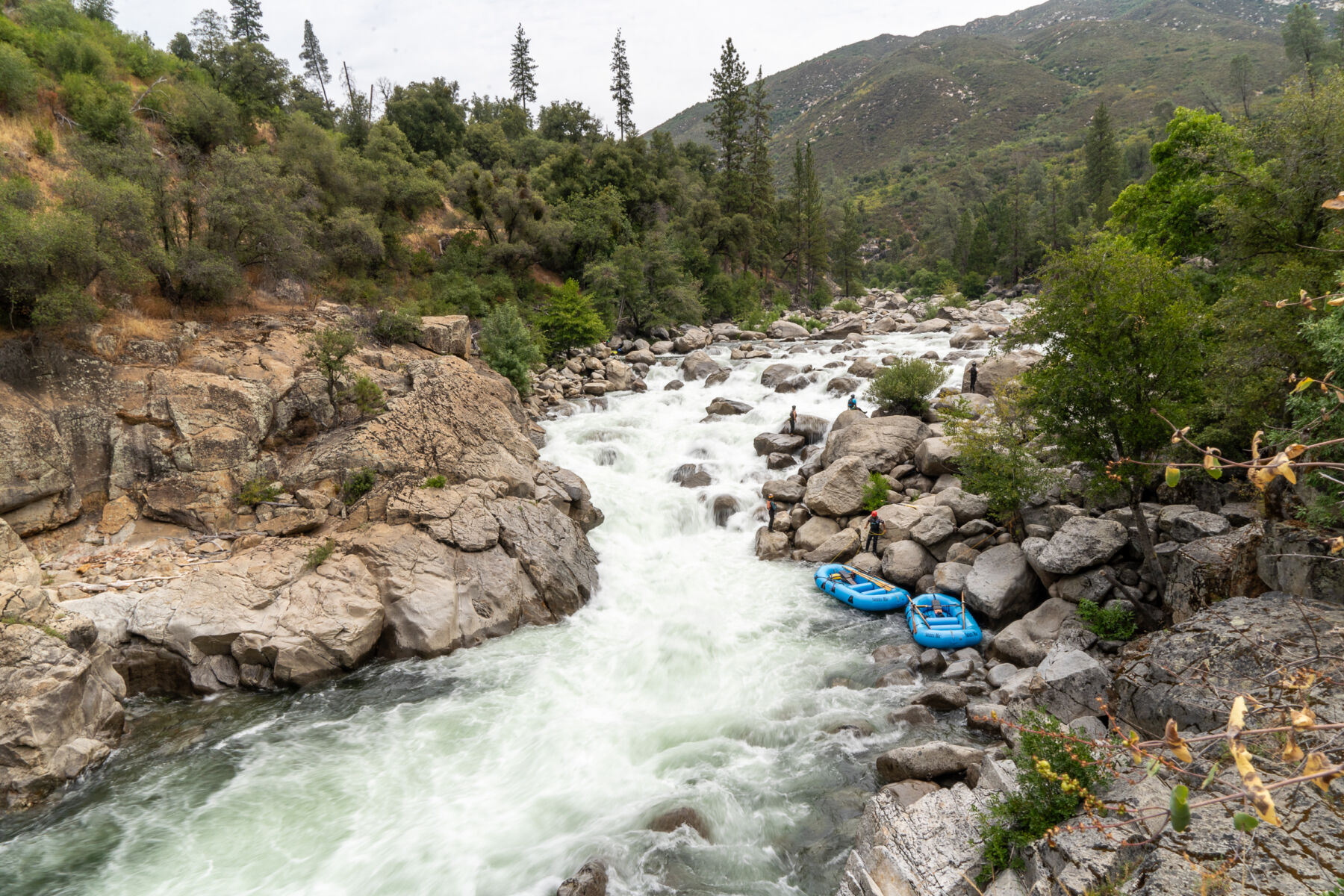
Cherry Creek and Tuolumne River Flows
For those planning trips, we’ve provided estimated current flows and historical flows for the past five years at two key locations: Meral’s Pool (for Tuolumne River trips) and Mushroom Rapid (for Cherry Creek runs). These estimates are valuable for gauging water levels and timing your adventures. Typically, by mid-June in most years, flows drop below 2000 cfs, marking the start of summer conditions when Cherry Creek becomes runnable.
In the summer, flows can vary significantly due to dam releases from Holm Powerhouse just upstream of the Cherry Creek put-in. The release typically lasts about three hours each morning from 8 to 11 AM. Rafters and kayakers need to stay within this “bubble” of water as it travels downstream. The water moves downstream at around a rate of 3 miles per hour.
Understanding Flow Estimates for Cherry Creek and the Tuolumne River
If you’re curious about how these flow estimates are determined, scroll below the graphs for a detailed explanation. Also, we want to give a shout out to the work Chris Shackleton of Dreamflows has put into figuring out all the flows and providing the best resource for river flows in the west. We are using his graphs below.
Estimated Flow on the Tuolumne River at Meral’s Pool
Flows over the last 5 Years at Meral’s Pool (est)
Flow Level Breakdown for Meral’s Pool
- 900 – 1500 CFS: These are considered low flows, typical of summer releases. Ideal conditions for kayaking and smaller rafts. Still Class III – IV, larger or heavier boats require additional skills to navigate the tighter, more technical rapids.
- 1500 – 2500 CFS: Medium flows, offering a great mix of Class III and IV rapids. Many find these flows little easier due to a few less rocks.
***Note that around 2200 cfs is when Cherry Creek trips stop running. - 2500 – 4500 CFS: Medium-high flows bring plenty of Class III and IV+ rapids. At these flows the river gets splashier and a little more challenging.
- 4500 – 8000 CFS: High flows create thrilling Class IV+ rapids with big waves and fast-moving water. These levels are best suited for athletic, fit people seeking excitement.
- Above 8000 CFS: Extremely high flows mean rapid, powerful water with long, intense rapids. This level requires significant experience and is best for those ready for a high-adrenaline adventure. Many consider the Tuolumne River Class V at these flows.
Note: CFS refers to “Cubic Feet per Second,” a measure of river flow.
Estimated Flow at Mushroom Rapid for Cherry Creek Trips
Flows over the last 5 Years at Mushroom Rapid (est)
Cherry Creek/Upper Tuolumne flow range is approximately 1000 to 2200 cfs.
How Flow Estimates Are Calculated
Flow data for the Tuolumne River and Cherry Creek sections come from estimates based on upstream USGS gauges and calculations by Chris Shackleton of Dreamflows. From our understanding, here’s how it works:
- Meral’s Pool (Tuolumne River)
Meral’s Pool, the launch point for Tuolumne River trips and the endpoint for Cherry Creek/Upper Tuolumne runs, doesn’t have a direct gauge. Instead, flow estimates combine data from several upstream USGS gauges (The flows below are combined with estimates of additional contributions from smaller tributaries):- South Fork Tuolumne
- Middle Fork Tuolumne
- Cherry Creek below Holm Powerhouse (just above the Cherry Creek rafting launch site)
- Tuolumne River below Early Intake
- Mushroom Rapid (Cherry Creek/Upper Tuolumne Section)
The flow at Mushroom Rapid represents the Upper Tuolumne River at this point and includes contributions from:- Cherry Creek below Holm Powerhouse
- Tuolumne River below Early Intake
- Jawbone Creek (one of the more major ungauged tributaries that adds some water near Mushroom Rapid, which Chris accounts for in his estimates).
One challenging aspect of these calculations lies in estimating the travel time for water from each gauge to reach specific points on the river. This travel time decreases as flow levels rise, adding complexity to the estimates.
Start Planning Your Best Adventure
Dispatches from adventure tours around the world and tips for intrepid travelers. Read Our Blog
International Rafting Trips: Why Try It and What to Expect
The United States is home to an amazing array of multi-day (overnight) rafting expeditions. At Rivers & Oceans we came up with our list of the top 10 best rafting and camping trips in the U.S.
Keep Reading > International Rafting Trips: Why Try It and What to Expect
Family Whitewater Rafting Trips
In this article, we’ll explore what makes family whitewater rafting trips special, provide tips for planning a successful excursion, and highlight some of the most popular family whitewater rafting trips. Learn about the best option based upon length, difficulty, whitewater, access, and scenery.
Snowpacks and their Impact on Rafting Western Rivers
Snowpacks and their Impact on Rafting Western Rivers A big snowpack like this year across most of the Western United States generates excitement among both rafters and winter sports enthusiasts.…
Keep Reading > Snowpacks and their Impact on Rafting Western Rivers

